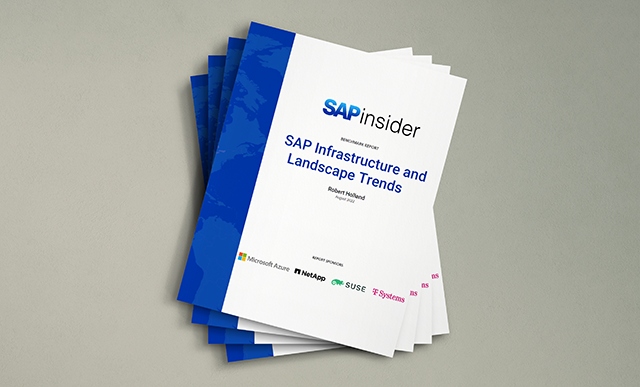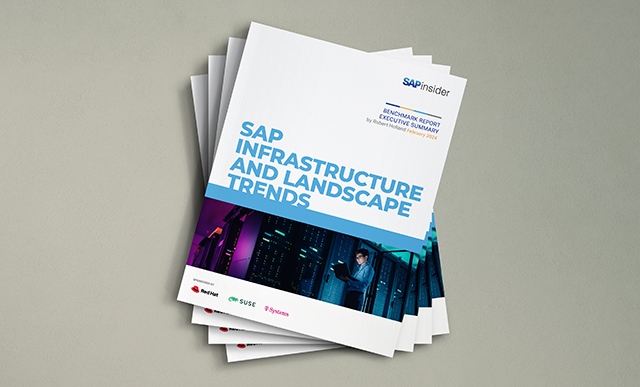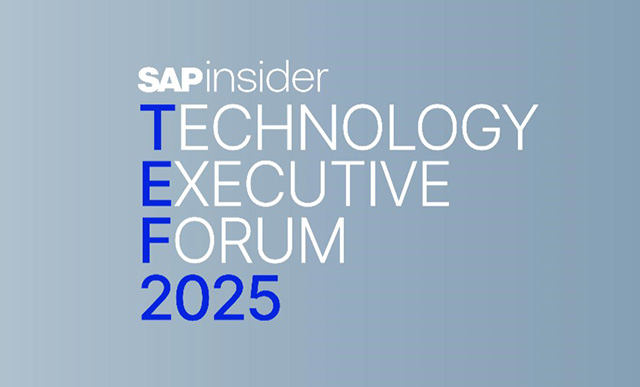Centralized Management of Hybrid SAP Landscapes
by Michael Hesse and Markus Winter, SAP
In the digital world of big-data and in-memory technologies, innovation has become a key differentiator for companies running SAP software. Cloud-based solutions in particular are helping organizations expand into new business areas, with a growing array of infrastructure-as-a-service (IaaS) solutions enabling companies to get new projects up and running quickly, without the time and cost associated with on-premise deployments. For example, using IaaS-based resources to test and customize a new solution can speed the deployment process significantly.
On-premise solutions remain a critical part of IT infrastructures, however. Organizations might want to keep their most sensitive data on premise to fulfill strict security requirements, for instance, and some industries, such as defense, might have policies against storing data outside the country where they are based. Consequently, IT departments find themselves running hybrid landscapes of growing complexity, which increases the administrative burden for IT staff already under pressure to spend more time on innovation projects while decreasing costs.
Explore related questions
To help SAP customers minimize time-consuming maintenance work — such as provisioning, cloning, and refreshing SAP systems and solutions — so that they can respond in a timely way to digital opportunities, SAP offers SAP Landscape Management, an application that can simplify the management of hybrid SAP landscapes. Introduced in 2011, with the latest version, 3.0, delivered in November 2016, SAP Landscape Management is a separately licensed application that runs on SAP NetWeaver Application Server (SAP NetWeaver AS) for Java version 7.40 and higher. It provides a centralized, simplified framework for managing SAP and non-SAP solutions and systems, both on premise and in the cloud, and with its support for SAP HANA and SAP S/4HANA, it helps companies adopt innovations such as the Internet of Things (IoT) and predictive analytics.
This article provides an overview of how SAP Landscape Management simplifies the maintenance of hybrid SAP landscapes. It first looks at the solution’s functionality, and then walks through how it is used in key implementation scenarios.
Simplifying SAP Landscape Management
With SAP Landscape Management, SAP administrators can reduce the time spent keeping the lights on. By simplifying SAP system and landscape management and providing landscape-wide visibility and control across infrastructure layers, the software enables companies to run their SAP solutions more efficiently across physical, virtual, and cloud environments. The result is increased efficiency, lower operating costs, and time freed up for IT teams to focus on more value-added activities.
SAP Landscape Management helps streamline the management and operations of SAP hybrid landscapes by:
- Centralizing landscape management
- Automating system provisioning for SAP solutions
- Providing comprehensive design and extensibility tools
- Helping administrators manage landscapes based on the SAP HANA platform
Centralizing Landscape Management
SAP Landscape Management provides a single pane of glass through which you can view your entire system landscape. The software enables you to centralize management of your IT infrastructure with built-in support for system dependencies and tools to help monitor the health and availability of SAP services across your IT environment.
Real-time dashboards (see Figure 1) help show at a glance how your systems are running and provide a quick, high-level overview of your current landscape state. Meanwhile, landscape visualization technology allows you to visualize systems as well as underlying infrastructure and identity relationships.
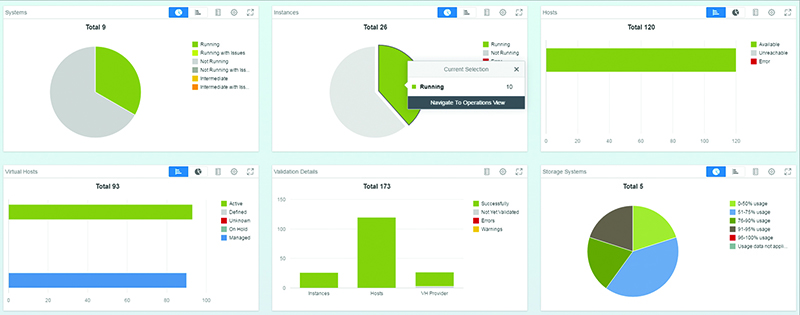
A sophisticated scheduling engine allows you to schedule and execute mass or sequential tasks during planned maintenance. In addition, you can use a rolling kernel switch procedure to update application servers step by step, in a rolling fashion, without causing downtime and disruption for users.
Automating System Provisioning for SAP Solutions
With SAP Landscape Management, you can automate the repetitive, day-to-day administration tasks that typically tie up IT personnel. These activities include complex provisioning operations such as copying systems, cloning data, performing refreshes, and installing application servers.
In addition, SAP Landscape Management enables the automation of crucial activities — such as cleaning up print jobs, changing RFC destinations, and converting logical systems names — that must be performed after the copy or refresh of SAP NetWeaver or SAP Business Suite applications. You can automate these post-copy activities either as part of the system copy and refresh process or as a standalone task.
Providing Comprehensive Design and Extensibility Tools
Using SAP Landscape Management, you can tailor landscape administration processes to meet the needs of your organization. For example, custom provisioning functionality enables you to integrate and use your own replication technology for system provisioning.
In addition, custom operations functionality lets you create action buttons inside the operations pane for SAP Landscape Management. For example, you can create an action button that gives an SAP administrator access to a privileged OS command without the need for login details. Custom hooks also allow you to extend, modify, or even replace existing workflows within the solution, and automation studio tools enable you to schedule operations, such as a restart during the night, to be executed on instances, systems, or hosts at specific points in time.
Helping Administrators Manage Landscapes Based on the SAP HANA Platform
You can use SAP Landscape Management to efficiently operate and provision SAP solutions optimized for SAP HANA, including SAP S/4HANA. In addition to automating system copy and refresh operations, the landscape management software enables you to automate functionality within SAP HANA.
This functionality includes the takeover feature, which allows you to switch activity from primary to secondary systems. In addition, failover functionality enables you to complete the process of restoring the workload from a standby host back to the original host after it has been recovered and is operational again. With near-zero downtime maintenance capabilities, you can also keep solutions up to date without disrupting users.
How Does SAP Landscape Management Work?
SAP Landscape Management enables companies to run and maintain their IT solutions effectively, wherever they are hosted, which allows IT to run its operations to suit the needs of the business and support cloud-based initiatives more easily. To support this capability, SAP Landscape Management uses a flexible adapter concept that enables companies to connect to any kind of infrastructure.
With this support, organizations can manage and control private and public cloud-based solutions, on-premise environments, or a hybrid combination of these scenarios, allowing them the agility to take advantage of the benefits offered by the cloud, while continuing to maintain sensitive information in their on-premise solutions.
These capabilities enable SAP Landscape Management to support a variety of mixed environments. Let’s take a closer look at how SAP Landscape Management supports on-premise and IaaS landscapes, which are two of the most common scenarios.
Managing On-Premise Environments
Figure 2 shows the components set up in an on-premise environment. As depicted, SAP Landscape Management is installed on SAP NetWeaver Application Server for Java. The landscape management software has two application programming interfaces (APIs) with adapters that enable them to manage central storage and virtualization environments. SAP Landscape Management also connects to the physical or virtual server hosting SAP applications and controls administrative functions — such as starting and suspending virtual machines, information gathering about hosts and operating systems, and moving SAP components between hosts — for this software.

Managing IaaS Environments
Figure 3 shows SAP Landscape Management set up to control systems in an IaaS environment. In this scenario, adapters that connect to the IaaS provider’s APIs enable the landscape management software to manage private-cloud environments (such as OpenStack) and public-cloud environments (such as Amazon Web Services and Microsoft Azure). One of the key requirements for successfully managing this kind of environment is a proper networking setup. SAP Landscape Management requires network access to each of the managed SAP systems, which is usually achieved by a VPN or proxy network setup.
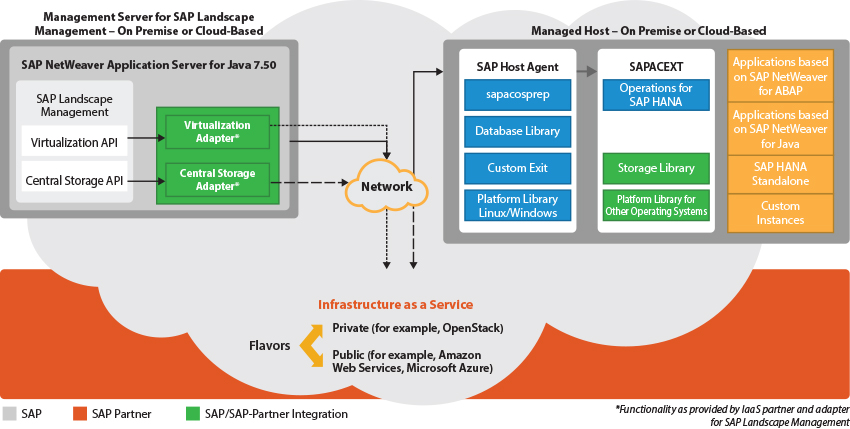
Freeing IT Resources to Drive Innovation
By enabling administrators to manage hybrid IT environments using a single tool, SAP Landscape Management radically simplifies how companies can manage their IT infrastructures. This, along with increased automation, is transforming how IT professionals are performing their jobs. Instead of spending the majority of their time on day-to-day administration work, IT personnel can have more free time for innovation projects that help the business create a competitive advantage.
Furthermore, support for the management of in-memory computing environments like SAP HANA allows companies to take full advantage of big data-based technologies such as artificial intelligence, the Internet of Things, blockchain, and predictive analytics. In this way, SAP Landscape Management can be viewed as a critical solution to help SAP customers drive innovation in IT and support digital innovation projects.

Michael Hesse (michael.hesse@sap.com) is a Product Manager at SAP with a focus on landscape management. He works very closely with SAP partners to integrate solutions to manage SAP systems running on different infrastructure platforms. Before joining SAP, Michael worked for VMware and EMC focusing on integrating new technologies with SAP solutions.

Dr. Markus Winter (ma.winter@sap.com) has been working in the field of landscape optimization, virtualization, and cloud computing for the past 17 years, and during that time has driven landscape management topics within SAP. He currently leads the Cloud Management product unit as Chief Product Owner.



